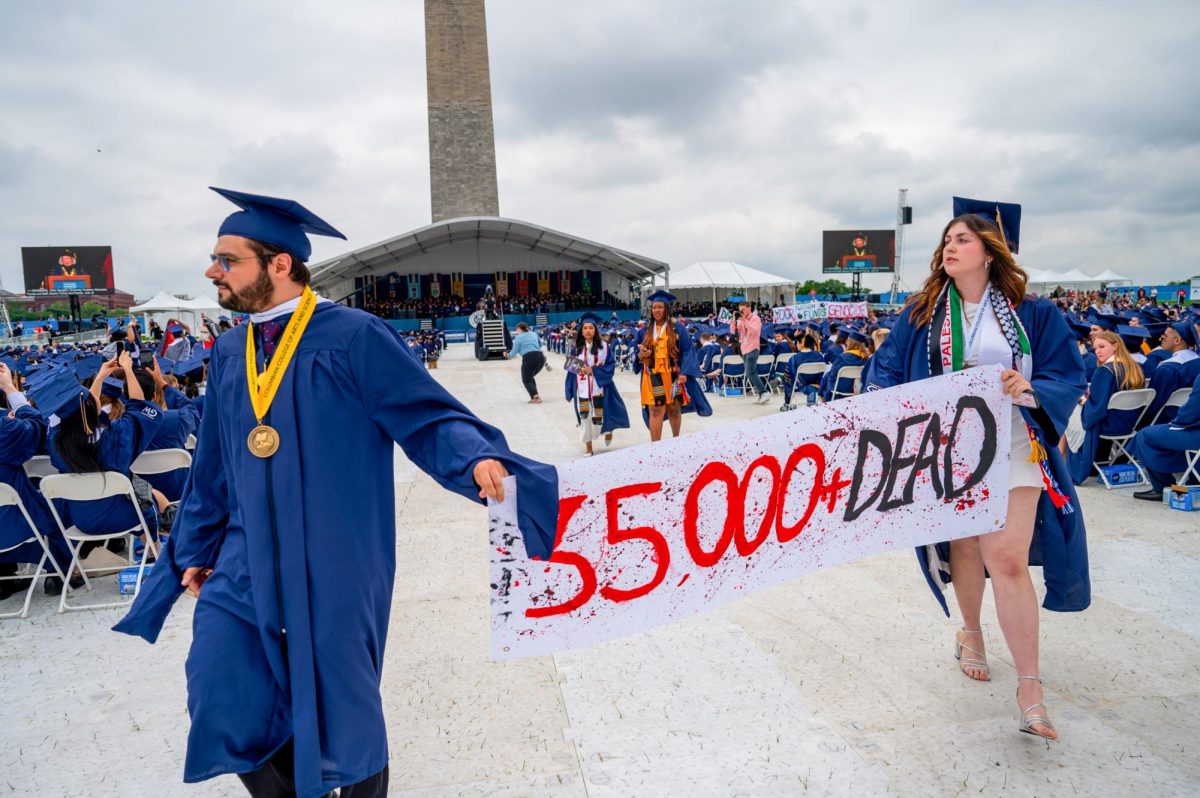The first-ever student library donation campaign left officials unsure of whether the initiative will impact funds after the effort elicited mixed student reactions.
Officials hosted the inaugural “Support Your Library Day” last Thursday, during which library staffers launched a social media and postering campaign to demonstrate what resources are funded by donations. Library fundraising experts said student donation campaigns could help gather financial support for the library by reminding students what they may lose if the library’s funds slump.
Throughout the day, library officials posted green flags on chairs and desks in Gelman Library, telling students that the items were “funded by your student library donations.” Officials also used Twitter to spread messages about supplies, like whiteboards and office supplies, that are supported by donations.
Geneva Henry, the dean of libraries and academic innovation, said student reaction to the campaign was “mixed,” but the main goal was to initiate a conversation about funding. She said students commented in person and on social media about their “strong support” for the libraries.
Ty Miranda, a graduate student who retweeted by Gelman Library’s account, said she used the newly launched math and science tutoring center to gain software skills.
“Why am I opting in for @gelmanlibrary? Because weekly meetings with @stemworksgw consultants have allowed me to learn software to increase my marketable skills in the job market,” she tweeted.
While some students voiced support for the libraries on Twitter, others posted pictures of the flags in the student Facebook groups “Overheard at GW” and the memes page, joking in one instance that mice found in the library were funded by student donations.
Henry said officials will be able to assess the impact of the campaign after they accumulate a semester of donations. She said once officials assess the impact of the campaign when the number of voluntary library gifts is available next year, they will decide whether or not they will do similar donation pushes again.
“We will continue to encourage students to make their library donation and to be as transparent as possible about the impact that donation has on the services and environment the library provides,” Henry said.
Henry declined to say how much it cost to execute the campaign and how administrators developed the campaign.
Library officials released a report in early April asking for more funding from the University, saying the library would lose an estimated $1.5 million after the Board of Trustees decided to switch the voluntary library gift from an opt-out to an opt-in process in February. The change will go into effect in the fall.
Library funding experts said showing donors how their money is being used is an effective fundraising technique and one that could help secure a new source of revenue for libraries.
Jesse Whitchurch, the development director at the University of Utah, said libraries are always looking for new sources of donations, but it is typical to have student donations be mandatory as part of fees. Voluntary donations usually come from outside donors, he said.
“I have not seen a campaign this focused on students, but more of us need to get used to it because most libraries don’t have a sustained donor base,” he said.
Whitchurch said the campaign could be a “springboard” for students to give because it will help educate students about how the library serves them. Alumni are hard to reach and teaching students to value the library now could help improve alumni giving in the future, he said.
“Most people don’t know it’s much more than a study space, more than a book repository,” he said. “It has up to date resources, tools that people need.”
Natalie Moore, the director of advancement at the University of Texas at Austin, said her library features posters to remind students about what library resources are funded by philanthropy. She said the messages also target parents, who often are interested in what their students are doing outside of the classroom.
Moore added that she has also not seen a student-targeted campaign like GW’s, but students do need to understand libraries don’t have the funding they once had.
“Students spend more time in the library than they do in the classroom and in the laboratory,” she said. “Hopefully they remember the library after they graduate.”





